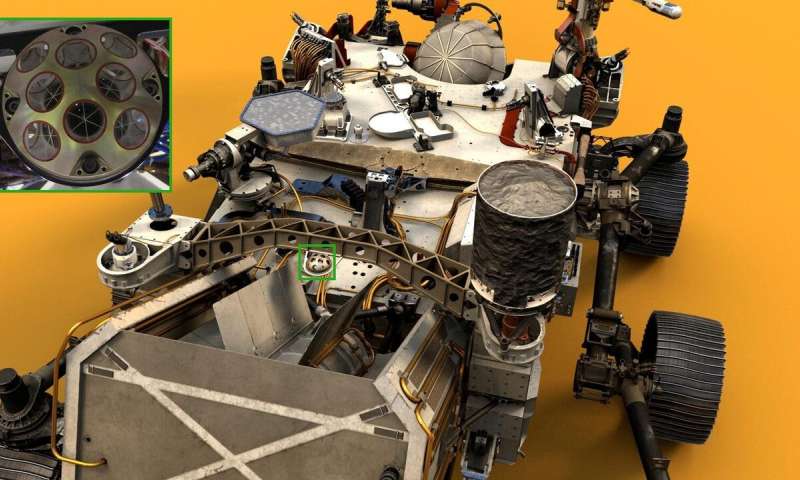HOME
New Mars rover is ready for space lasers

Visible near the center of NASA's Perseverance Mars rover in this illustration is the palm-size dome called the Laser Retroreflector Array (LaRA). In the distant future, laser-equipped Mars orbiters could use such a reflector for scientific studies. Perseverance was built and is operated by NASA's Jet Propulsion Laboratory, a division of Caltech in Pasadena, California. The retroreflector was provided by Italy's National Institute for Nuclear Physics, which built the instrument on behalf of the Italian Space Agency. Credit: NASA/JPL-Caltech
When the Apollo astronauts landed on the Moon, they brought devices with them called retroreflectors, which are essentially small arrays of mirrors. The plan was for scientists on Earth to aim lasers at them and calculate the time it took for the beams to return. This provided exceptionally precise measurements of the Moon's orbit and shape, including how it changed slightly based on Earth's gravitational pull.
Research with these Apollo-era lunar retroreflectors continues to this day, and scientists want to perform similar experiments on Mars. NASA's Perseverance rover—scheduled to land on the Red Planet on Feb. 18, 2021—carries the palm-size Laser Retroreflector Array (LaRA). There's also small one aboard the agency's InSight lander, called Laser Retroreflector for InSight (LaRRI). And a retroreflector will be aboard the ESA (European Space Agency) ExoMars rover that launches in 2022.
While there is currently no laser in the works for this sort of Mars research, the devices are geared toward the future: Reflectors like these could one day enable scientists conducting what is called laser-ranging research to measure the position of a rover on the Martian surface, test Einstein's theory of general relativity, and help make future landings on the Red Planet more precise.
News Source